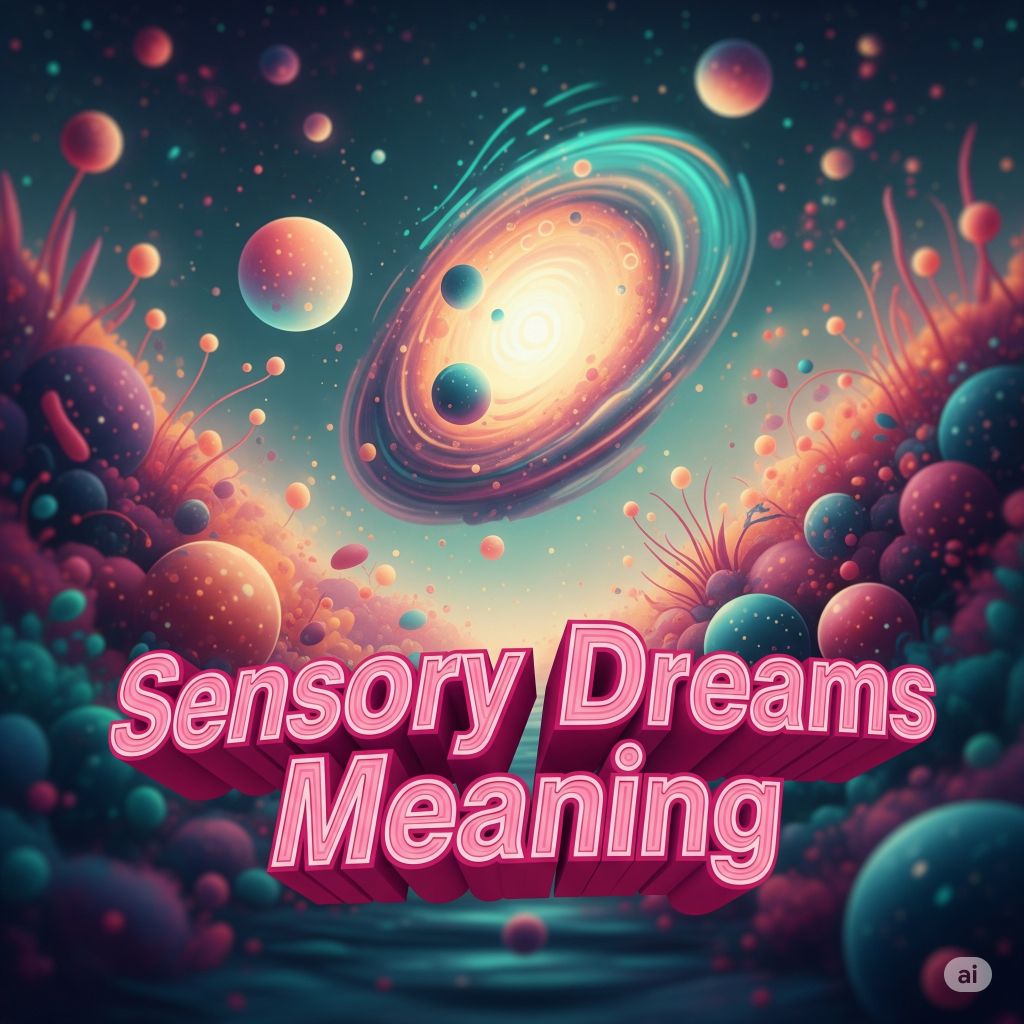
Here’s an in-depth exploration of Sensory Dreams—their definition, types, meanings, interpretations from scientific and psychological perspectives, and impact in waking life
What Are Sensory Dreams?
Sensory dreams are dreams that involve particularly intense or realistic sensations corresponding to any—or all—of the five senses: sight, sound, touch, taste, and smell. Unlike typical dreams, which are primarily visual and sometimes auditory, sensory dreams stand out due to the vivid, immersive experience of sensations that may be nearly indistinguishable from real life.
Key features of sensory dreams:
- Highly realistic or exaggerated sensory experiences
- Involvement of senses rarely noticed in dreams (taste, smell, touch)
- Powerful emotional responses tied to these sensations
- Heightened dream recall upon waking due to the memorable impact
Types of Sensory Experiences in Dreams
| Sense | Examples in Dreams | Possible Meaning |
|---|---|---|
| Sight | Vivid colors, clear images, detailed landscapes | Often reflects heightened awareness or emotional engagement |
| Sound | Music, voices, explosion, animal calls, whispers | Can symbolize messages, warnings, or emotional tones |
| Touch | Physical contact, pain, hugs, being held, floating, falling | May be linked to desire for connection, comfort, or security |
| Taste | Tasting food, drinks, bitterness, sweetness | Rare in dreams; could symbolize longing, contentment, or disgust |
| Smell | Perfume, burning, flowers, food aromas | Also rare; might indicate deep memories, nostalgia, or alarms |
Scientific Perspective on Sensory Dreams
- Why Do Vivid Sensations Occur?
- REM Sleep Activation: During REM sleep, the brain is highly active and may simulate sensory experiences using stored memories and emotion.
- Brain Regions: Dreams may “activate” the same brain areas involved in real-life sensation (e.g., auditory cortex for sounds).
- Memory and Imagination: Highly sensory dreams often relate to strong memories or emotional associations (e.g., a smell from childhood).
- Frequency
- Visual and auditory experiences are most common.
- Smell and taste are rare; their presence is often meaningful or significant for the dreamer.
- Touch is common, especially in dreams involving fear, comfort, falling, or flying.
Psychological and Emotional Interpretation
- Reflecting Emotional States:
Strong sensory dreams may occur during emotional highs or lows, representing the brain’s way of processing intense experiences. - Trauma and Healing:
Survivors of trauma sometimes have dreams with overwhelming sensory input, replaying sights, sounds, or sensations associated with real events—sometimes as part of the healing process. - Wish Fulfillment:
Sensory pleasures (delicious food, warm embraces, pleasant aromas) can reflect longing, desire, or contentment unsatisfied in daily life. - Warning or Alarm:
Harsh sensations (burns, sourness, foul smells) might serve as metaphors for warnings or discomfort in a relationship or situation.
Symbolism in Sensory Dreams
- Sight:
Seeing clearly may symbolize insight, awareness, or a “revelation.” Blurred or lost sight might indicate confusion or fear of the unknown. - Sound:
Hearing a voice or music can carry messages from your subconscious. Shouting may represent a call for help; whispers could indicate secrets. - Touch:
The sensation of falling may reflect insecurity; floating could indicate confidence. Feeling warmth or pain often mirrors emotional states. - Taste & Smell:
Rare but vivid, these often relate to powerful memories (as in Proust’s madeleine), desires, nostalgia, or even forewarnings about health or environment.
Sensory Dreams and Lucidity
- Lucid Dreamers often report richer sensory experiences since they’re more aware of and can “choose” to focus on sensual details in their dreams.
Cross-Cultural Views on Sensory Dreams
- In some cultures, sensory details in dreams are seen as messages from ancestors or the spirit realm, interpreted as omens or advice.
- In traditional psychoanalysis, rare sensory details in dreams might signal a meaningful psychic event or deep personal message.
Common Sensory Dream Scenarios
- Craving Food or Drink: Feeling deep satisfaction, longing, or even hunger in waking life.
- Running and Feeling the Ground: Associated with grounding, freedom, or escape.
- Embraces or Touch: Desire for connection, healing, or intimacy.
- Hearing Warnings: Need to be alert or take heed of something important.
- Experiencing Pain: Sometimes reflects inner turmoil or a need for self-care.
Practical Tips to Benefit from Sensory Dreams
- Keep a Dream Journal:
On waking, jot down not only what you saw, but also what you heard, felt, tasted, or smelled—all details matter. - Reflect on Emotional Triggers:
Ask yourself if heightened senses correspond with events, desires, fears, or unmet needs in your waking life. - Use in Creativity:
Writers, artists, and musicians can mine sensory dreams for inspiration—these dreams offer ready-made “material.” - Mindfulness Practice:
The vividness of sensory dreams may increase for people who are more mindful or practice meditative awareness during the day.
When to Seek Help
- If sensory dreams are disturbing, recurrent, or linked to trauma, or if they cause anxiety or sleep loss, consider consulting a sleep specialist, therapist, or counselor.
Summary
Sensory dreams offer a window into the depth and power of the dreaming mind, tapping into richly stored sensory memories, emotions, and desires. Whether you feel the warmth of sunlight, taste sweet fruit, or hear a loved one’s voice, these dreams can offer insight, pleasure, and sometimes even guidance. Paying closer attention to their sensory details may help you uncover new layers of meaning about yourself and your life—awake or asleep.






